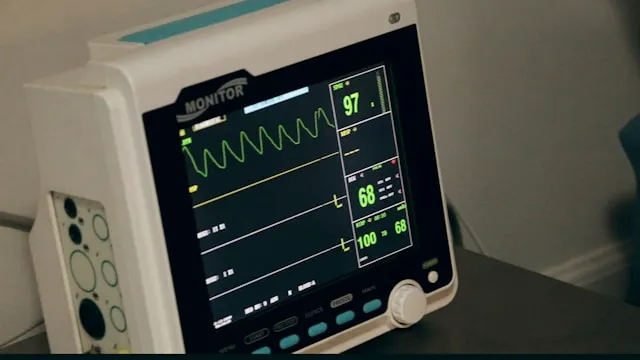What is percutaneous transluminal coronary angioplasty?
Percutaneous transluminal coronary angioplasty (PTCA) is a minimally invasive surgical procedure that opens blockages in coronary arteries and allows blood to circulate unobstructed through blood vessels to reach heart muscles. It is commonly referred to as angioplasty.
Why do you need PTCA?
You will be recommended percutaneous transluminal coronary angioplasty (PTCA) if you are suffering from coronary artery disease (CAD) that results from atherosclerosis, a condition in which walls of the coronary artery (that supply blood to heart) develop deposits of cholesterol, fatty compounds, calcium and a blood clotting material known as fibrin. As the blockage worsens, blood supply to the heart slows down, causing a condition known as angina pectoris.
Treatment with medication decreases the chances of blood clots forming at the site of blockages, but does not clear the blocked arteries itself. In such cases, your doctor will recommend surgery to remove the blockages and reduce your risk to heart attack.
PTCA is one of the two surgical options available to treat arterial blockages, the other therapy being coronary bypass surgery. Your doctor will opt for either or coronary bypass surgery depending on the extent of narrowing of the artery, a number of arteries affected, their location, your risk to heart attack, and individual health concerns.
Which specialist should you consult if you have any of the signs and symptoms?
Consult a cardiologist if you experience intense angina pains. Angina starts in the center of the chest but may radiate to your arm, neck, back, jaw or throat. You may feel numbness in your shoulders, arms or wrists. One episode of angina lasts for a few minutes and generally goes away with rest. An interventional cardiologist, along with a team of specialized cardiovascular technicians and nurses, performs angioplasty or PTCA.
What are the screening tests and investigations before the surgery?
Your cardiologist will assess your medical history and conduct a physical exam prior to the surgery.
You will undergo an imaging exam known as coronary angiogram that will determine if your arterial blockages can indeed be treated with a PTCA procedure. Your doctor will assess the extent of damage and schedule the procedure accordingly.
What is the procedure for PTCA surgery?
Percutaneous transluminal coronary angioplasty or PTCA may take 30 minutes to few hours, depending on the number of blockages to be removed and occurrence of any complications during surgery. General anesthesia is not required for the procedure and you would be awake during its entire duration.
Local anaesthesia is administered in the groin area into the femoral artery, followed by a guide wire that is placed through the needle. The wire is removed after an introducer is placed over it and replaced with a wire of different size.
Next, your surgeon places a diagnostic catheter (long, narrow tube) into the blood vessel through the introducer. Once in place, the guide wire is removed and the catheter is gently guided to the aorta till it reaches one of the openings of the coronary arteries. A dye is injected and an x-ray is taken to observe blockages.
Next, the surgeon replaces the diagnostic catheter with a guiding catheter, followed by a balloon catheter to the site of blockage. The balloon is inflated to push the blockage against the artery wall, followed by a phase of deflation. Each pumping motion of the balloon widens the arterial passage. A device called stent may be placed within the artery to keep the blood vessel open and allow blood to flow. Another x-ray is taken through an injected dye to check for the changes made. Following a successful procedure, the catheter is removed and the procedure is completed.
What are the known complications of the surgery?
Common complications of PTCA procedure include:
- Re-narrowing of the artery - Known as restenosis, this condition happens when PTCA is completed without adding stents in the blood vessel.
- Blood clots - Blood clots may develop in the stents in weeks or months after angioplasty, which can cause a heart attack. Medication like aspirin can counter the problem.
- Bleeding - Bleeding due to a bruise at the site of catheter injection is common, but serious bleeding may necessitate blood transfusion or separate surgical procedure.
Other rare complications of surgery include heart attack, coronary artery damage, kidney trouble, stroke and abnormal heart rhythms.
What precautions or steps are necessary to stay healthy and happy before and after PTCA?
You will undergo routine tests like blood tests, chest x-ray, and electrocardiogram (ECG) and your heart might be monitored overnight in preparation for the surgery. Talk to your specialist about any medication you are taking. You could be given anti-coagulant medications and medicines to relax your arteries.
What are the dietary and physical activity requirements before and after PTCA?
Post PTCA, drink plenty of fluids to remove the contrast dye from your system. Avoid lifting weights and performing the strenuous exercise for about a week after the procedure. You should be able to return to work and daily routine after a week of having undergone angioplasty.
It is important to note that PTCA does not mean that you are cured of heart disease. Continue healthy lifestyle habits and medications as prescribed by your doctor to prevent re-narrowing of your artery.
As a caregiver, how can you support and help the patient cope with the surgery?
A person undergoing percutaneous transluminal coronary angioplasty (PTCA) requires an overnight hospital stay. You can support him/her by taking care of their needs in the hours after surgery and arrange for their transportation home. If you are looking for consultation, a cardiologist in Noida now!
Sources:
"Coronary artery disease," Texas Heart Institute, October 2012, https://www.texasheartinstitute.org/HIC/Topics/Cond/CoronaryArteryDisease.cfm "Percutaneous transluminal coronary angioplasty (PTCA)," National Library of Medicine, National Institute of Health, Medline Plus, Glenn Gandelman, https://www.nlm.nih.gov/medlineplus/ency/anatomyvideos/000096.htm Image source: www.itriagehealth.com

Reviewed by







